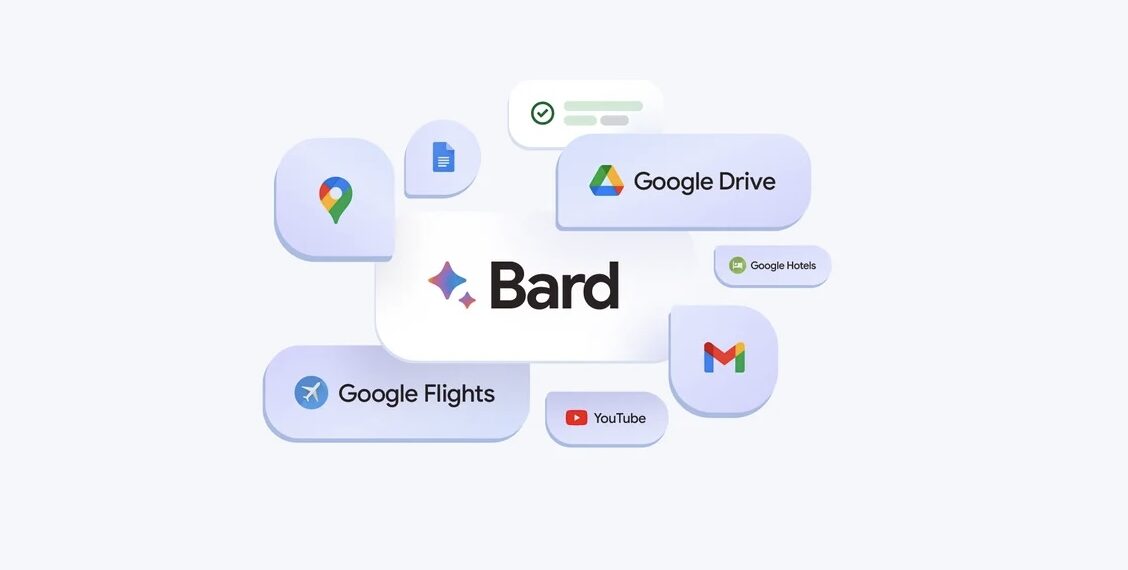Google has revealed the latest update to Bard, bringing a smarter and more capable version of its AI model.
The update not only refines Bard’s linguistic abilities across various languages and regions but also integrates it with popular Google apps and services to boost productivity.
Some of the key highlights of this update include:
- Enhancements for Intuitiveness and Creativity: Google has improved Bard’s intuitiveness and creativity, making it more responsive and imaginative.
- Bard Extensions: Introducing Bard Extensions, which allow Bard to fetch real-time information from platforms like Maps, YouTube, Hotels, and Flights.
- Integration with Gmail, Docs, and Drive: Users can enable Bard to interact with their Gmail, Docs, and Drive content, allowing it to find, summarize, and answer questions based on personal data.
- Multilingual Collaboration: Users can collaborate on creative projects across multiple languages and countries seamlessly.
- Coding Assistance and Topic Exploration: Bard now offers assistance with coding queries and the ability to explore various topics from different perspectives, maintaining high quality and accuracy.
Google acknowledges that user feedback and improvements in the PaLM2 model have enhanced Bard’s intuition and responsiveness. Reinforcement learning techniques have been applied to make Bard more intuitive and imaginative. This update enables collaborative creative projects, multilingual interactions, in-depth coding assistance, and broader topic exploration.
A significant step forward is the introduction of Bard Extensions, which expand Bard’s capabilities by integrating real-time information from Google apps and services. Users can seamlessly access data from Maps, YouTube, Hotels, and Flights to streamline their tasks and projects.
Users can also allow Bard to interact with their Gmail, Docs, and Drive content, making it a valuable partner in organizing and retrieving information. Importantly, Google emphasizes that Google Workspace data won’t be used to train Bard’s public model, and users have the option to disable this feature.
Recognizing the challenges of large language models, Google has integrated Google Search to help users verify Bard’s responses. Users can now double-check Bard’s AI-generated responses by clicking on the [G] button to find content that aligns with or contradicts Bard’s statements. This feature aims to enhance user confidence in AI-generated information.
To foster creativity, Google is making it easier for users to build on conversations shared by others. When someone shares a Bard conversation via a public link, recipients can continue the conversation and further develop ideas.
Google is expanding access to popular features across all supported languages and countries. Users can now upload images with Google Lens, receive Google Search images in responses, and modify Bard’s responses to meet their specific needs. This expansion gives users greater control over their creative processes and opens up new possibilities for using images in prompts and responses.
This update represents a significant leap forward for Bard, making it a more versatile and powerful tool for users across the globe. While these new features are currently available in English, Google plans to roll them out to other languages in the near future. As Google continues to iterate and learn, user feedback remains crucial in shaping Bard’s capabilities.






